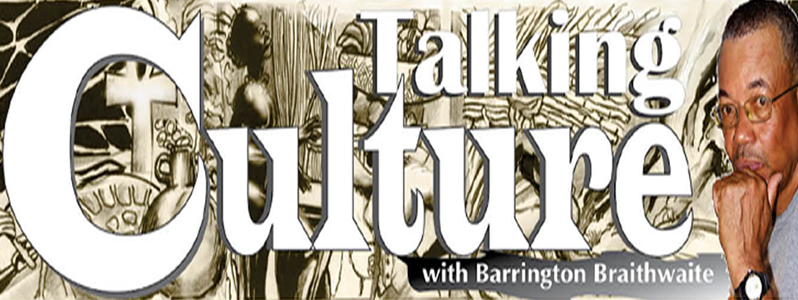THERE is a lobby of broke middle-aged men (like myself), who are not concerned with statistics and facts but see the salvation of sustenance through the mist of a marijuana-high Guyana. They are backed by the finances of large landowners who realise that it is cost effective to employ a disposable group for the realisation of their own monopoly should the improbable become possible. During 2013 and then in 2014 at a meeting with representatives of the Rastafarian group, we discussed an intelligent approach to the issue of Marijuana and its legal ramifications to their livelihood and cultural rights. With the presence of ‘Frankenstein’ and ‘Pappy’, synthetic marijuana now on the market with dangerous-toxic effects, it was all agreed that a truce with this group and the state should be made to permit a controlled cultivation of this plant within a specific village area managed by a responsible Rastafarian group-and that group I had the meeting with by the quality of the exchange, appeared to represent that form of responsibility. Other options were discussed that led to the mentioned that cannot be open to the public just yet.
The Rastafarians are in the crucial position of, following the advent of Bob Marley’s music, becoming the poster group of marijuana, its abuse and existence in this country, especially in the Afro Guyanese communities and have suffered most to prosecution. Marijuana came to the Caribbean through indentured labour from India. All records place its origins in China, where hemp was utilised for clothing and ship sails. It existed in China some 10,000 years ago. Some 2,000 years ago, Cannabis was declared by Chinese physicians as a Phantasm which enfeebles the population, causing mental and nervous excitation, distorting the sense of time and space and was culturally discontinued. In India, it was encouraged among the low castes. With the rise of Buddhism some 600 years before Christ, Buddhism forbade intoxicants to its followers but with the decline of Buddhism and resurgence of Brahmanism it returned. Though the Laws of Manu forbid the Brahmin to use, trade, or possess soma-cannabis, one can only assume the part it played in maintaining the caste system. Like every plant, cannabis has positive uses if the technology to extract the psychotic component of THC can be mastered and then applied to relative illnesses.
 A friend called me recently to discuss a family tragedy where two of his sons were committed for psychiatric treatment because of their use of ‘Pappy Marijuana’. They were sent to Berbice. I’m not sure what kind of treatment they could get or what kind of treatment is proven in those situations. We have got to start through a directive to record and have statistics on areas that are currently undocumented. During 2015 Elton McRae and I visited the Police to talk on RESCU. There we learned of things we thought they could do but that they couldn’t do, which would have made it easier to facilitate documentation. We need to know what is the direct impact on crime by drug addicts.
A friend called me recently to discuss a family tragedy where two of his sons were committed for psychiatric treatment because of their use of ‘Pappy Marijuana’. They were sent to Berbice. I’m not sure what kind of treatment they could get or what kind of treatment is proven in those situations. We have got to start through a directive to record and have statistics on areas that are currently undocumented. During 2015 Elton McRae and I visited the Police to talk on RESCU. There we learned of things we thought they could do but that they couldn’t do, which would have made it easier to facilitate documentation. We need to know what is the direct impact on crime by drug addicts.
It is known that drug yards send addicts to commit crimes, it’s not difficult to verify. For some reason, the loss of some faculties permits two realities from addicts, the capacity to lie to obtain money for drugs and the inability to construct in most cases, complex scenarios to shield the truth when caught in acts. A report of addiction motivated crimes from both crack cocaine and marijuana would help the public awareness on topics like how to deal with the marijuana issue. A few weeks ago I was on a programme with MP Carrington on the marijuana issue; I discovered we were not on opposing sides, contrary to popular perceptions. I have always maintained that there has never been one effort to reach young Guyana with info on the downside of ‘Heights’ that existed since marijuana became mainstream and I was a youth, then with no family of my own, except for a baby mother. Back then I had witnessed many friends of mine who got high and stayed high whispering to other invisible friends, walked the road half and naked, most of that lot is gone now. Thus the three-year prison sentence for a marijuana spliff was unfair, but decriminalising should graduate to a court procedure on education and a strict bond and with the younger salvageable ones a service term in the VYC.
Whether we act or not it gets worse and more difficult to redeem. The data available tells us that marijuana baked into pastries etc. (there is a vibrant pastry business in existence) is worse than smoking a joint that takes one to three hours to be effective, the cake takes three to 10 hours for effect. In the intermediate, the smoker uses the cigarette, placing his/her self in readiness for an abuse-overdose scenario.
We were a reflective society once, but the last two decades pre 2015, the administrative era I call ‘The Town that’s upside down’ has left us potential innate addicts of mediocrity. If we who reached adulthood reflect, we would recall that every movie we saw in the 70s in packed cinemas, had stars puffing cigarettes. It was the ‘in’ thing. It was cool to have a charas stuck behind the ears. Then came the hard facts that cigarettes were killing people. We did wonder why so many film stars were dying from cancer. We thought that it was a ‘White people disease’ and Diabetes was a ‘Black people disease’. Lifestyles and food never crossed our immature, untutored minds. The list of stars that lung cancer killed is tremendous: Nat King Cole, Paul Newman, Donna Summer, Yul Brynner, Lou Rawls and on and on.
The question of Cannabis can be helped through the folks with the most experience; the Chinese and the Israelis. The former had experience for some three millennia. The latter has been exploring it since the 1960s at the Weizmann Institute and Raphael Mechoulam is the Professor on that topic. I would assume our authorities have already made this list.


.jpg)











